Mavs Film Room: Lessons From Dallas’ Game 1 Loss vs. Jazz
The Dallas Mavericks were unable to overcome Luka Doncic being sidelined in Game 1 of their first-round series against the Utah Jazz. The end result was a 99-93 loss.
It's not easy to contain one of the NBA's most efficient offenses to fewer than 100 points, but the Mavericks managed to get it done. However, Dallas sorely struggled to produce offensively without Doncic in the lineup.
Here were some key factors that went into the Mavericks' loss:
Limitations of Brunson-Dinwiddie Backcourt
There was an expectation of dropoff by going from a talent like Doncic running the offense to Brunson and Dinwiddie filling in. The extent to which the Mavericks' offense struggled exceeded even the most pessimistic of projections.
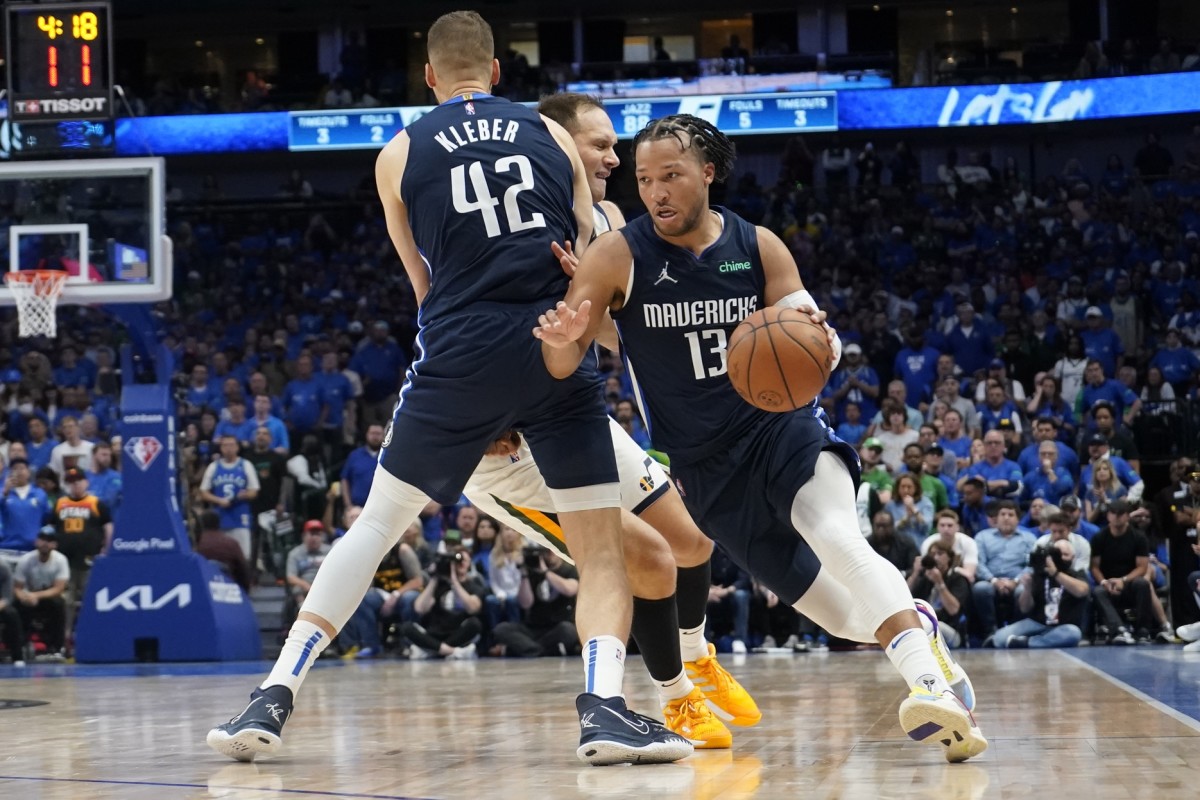
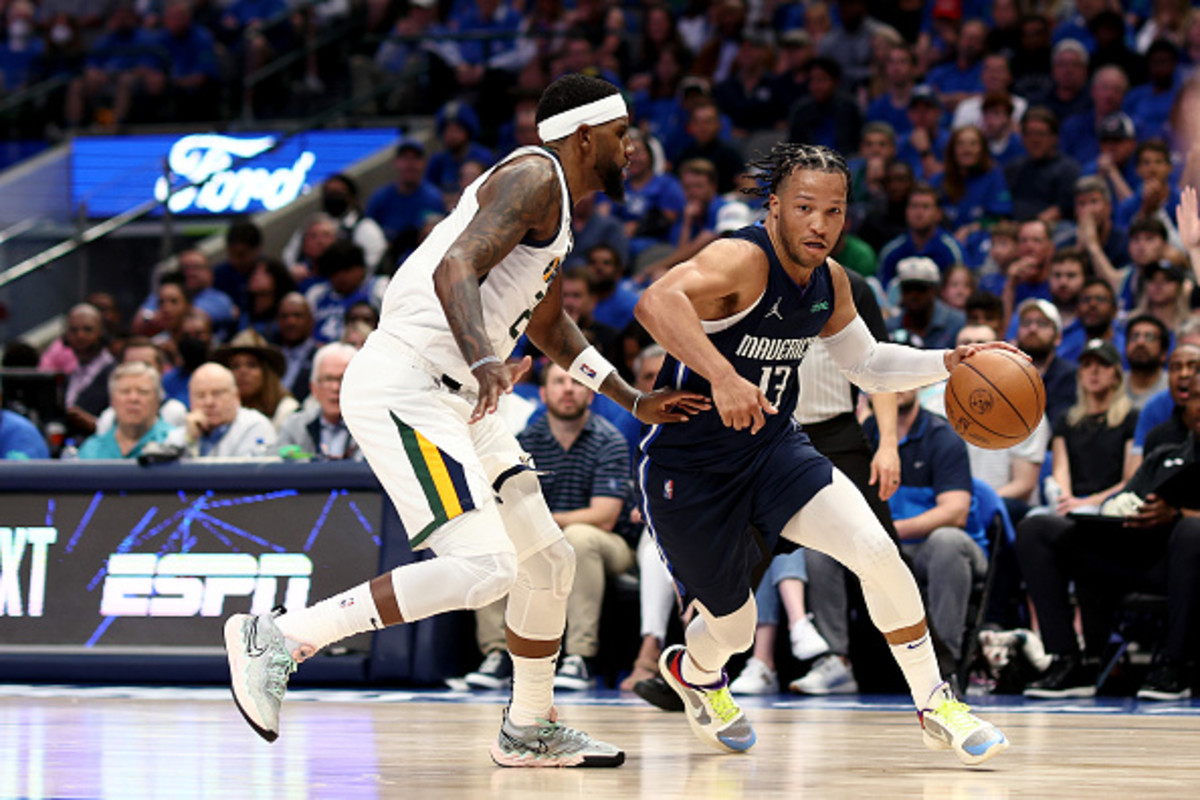
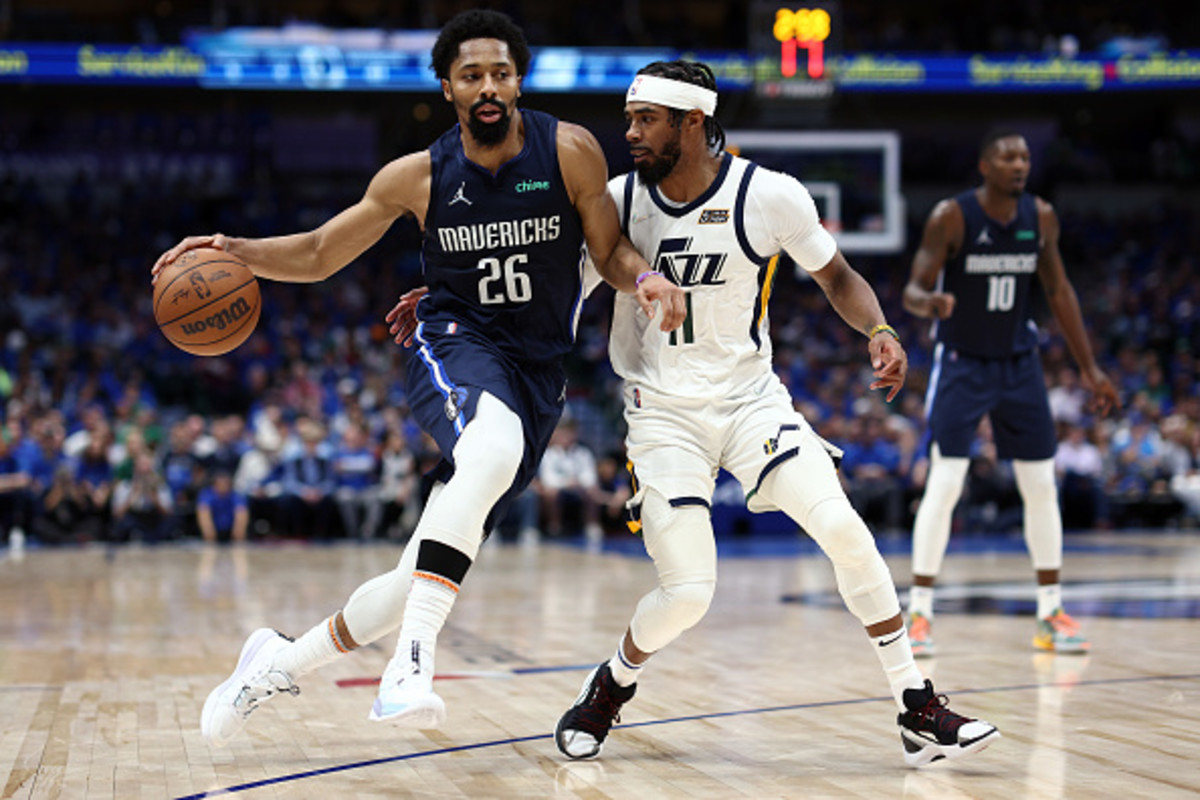
The Mavericks shot a combined 5-17 (29.4 percent) from the floor on shot attempts derived from the pick-and-roll ball handler taking a shot attempt. That lack of production is simply untenable against a defense with Gobert and Whiteside neutralizing the rim roller.
With neither Brunson nor Dinwiddie being much of a threat to take and make pull-up 3s, the Mavericks lack the necessary skill-set for an effective initiator against a matchup like the Jazz. Utah was able to go under screens at times without being made to pay for doing so.
Using re-screens or flipping the direction of the screen tends to get the on-ball defender to go over. On one possession when Dinwiddie utilized this, Gobert simply played closer to the level to deter him from attacking downhill — resulting in a missed pull-up 3. These are the types of attempts that need to be in a team's arsenal when going against Utah.
When the Mavericks attacked perimeter players in isolation situations, the Jazz often had a rim protector lurking waiting to help. They committed to making that presence felt, whether by playing off Powell from the dunker's spot or when Dallas attempted to space out from the 3-point line.
Not only were the Jazz able to go under screens on some possessions, but they were also often able to keep Gobert or Whiteside from having to switch.
Dinwiddie did manage to score twice after drawing a big on a switch by getting to the rim. These were not created by a regular high ball screen with a big. One switch occurred after an off-ball screening action, while another took place by using Finney-Smith as a screener after being guarded by Whiteside.
Gobert got the better of Dinwiddie in the fourth quarter by holding his own on an isolation possession. The Mavericks used a small lineup with Gobert attempting to anchor the paint without a man near him. Dinwiddie looked to attack out Gobert of the corner but came up empty.
The Jazz like to stay home on corner shooters and when Doncic is sidelined, the Mavericks do not have the personnel to draw help from those shooters. As a result, there is even greater pressure on Brunson and Dinwiddie to make plays with the ball.
The difference in pick-and-roll orchestration and general isolation scoring going from Doncic to options like Brunson and Dinwiddie is significant. The regular season results get thrown out the window as soon as Game 1 of the first-round tips off.
Jazz Exploited Role Player Limitations
There's a lot lost without Doncic in the lineup. The Mavericks' personnel options become thinner without Doncic playing heavy minutes — creating an opportunity for the Jazz to take advantage. The focus is on what he does with the basketball in his hands, but there's more to it than that.
The Mavericks faced the reality of picking between giving minutes to Josh Green or Davis Bertans — both of whom presented the Jazz with key advantages.
Whoever is spacing in the weak-side corner needs to command respect from the defense, or they are simply unplayable. When Green was on the court, the Jazz had the option of not even bothering with guarding him out on the perimeter. The center was able to pre-rotate and essentially camp out in the paint even when the Mavericks deployed a stretch-five.
At times, Brunson and Dinwiddie had to settle for a tougher shot on a drive as they had to account for the on-ball defender and a rim protector. With it already being challenging enough for their skill-sets to thrive against a defense like the Jazz, compromising the floor spacing made the task all the more daunting.
The Mavericks even tried to use Green as a screener on a few possessions, but the Jazz kept the big in a drop. Utah cares so little about the threat of Green shooting a wide-open jump shot, they completely left him on the pop. The end result? Another tough shot attempt that had a low chance of succeeding.
Green presented awkward limitations that went beyond being left wide open behind the 3-point line. Brunson made a pass anticipating Green would come to the basketball in time, but instead, he displayed a lack of feel. There were a few possessions when there was a noticeable disconnect shared between him and Brunson — each resulting in turnovers.
At times, the Mavericks did get by, with Green occupying the corner when Powell was on the floor and being involved as a ball screener. Utah used those situations to stick Conley or Clarkson on him while a rim protector was the big defender involved directly in guarding ball screens.
The spacing limitations were alleviated with Bertans on the court, but he was a clear target of the Mavericks' defense for the Jazz to hunt. It wasn't constant by any means, but it was high on the list of priorities for Utah and could become more prevalent.
Using multiple ball screeners with Bertans' man being among them was one of the Jazz's strategies. What he displayed was an inability to absorb contact and remain a factor along with being a turnstile out in space.
Bogdanovic had a possession where he also took advantage of Bertans in isolation. He used his strength advantage to create contact and spin into a short-range jumper — getting exactly what he wanted without his rhythm being disrupted.
It's not just about how Bertans guards a perimeter player out in space. The Jazz can take advantage of him as the low-man by manipulating him into making a tag before having to run out to the corner to be exploited.
With the Jazz wasting no time in exploiting the limitations of some of the Mavericks' role players, Dallas now has some tough decisions to make. Do they trust Green to make his open 3s going forward? Will Utah hunt Bertans even more in Game 2?
Bogdanovic Posed Problems
It was a struggle for both teams to put up points in the first half of this game. During this stretch, Bojan Bogdanovic scored 20 points on 8-11 (72.7 percent) from the floor and 2-4 (50.0 percent) on 3s. He kept the Jazz offense afloat when they needed him to step up the most.
Outside of Bogdanovic's production, the Jazz's other player recorded 25 points on 9-31 (29.0 percent) overall and missed all seven of their 3-point attempts.
The Jazz made it a point to utilize Bogdanovic's abilities in the post when defended by one of the Mavericks' guards. Whether it was Brunson or Dinwiddie, Bogdanovic got the best of each with a drop step into a finish.
Creating favorable matchups was a priority in other ways for the Jazz using Bogdanovic beyond just post-ups against guards.
Take the ball screen possession below as an example; Bogdanovic drew the switch and retreated out to space — setting up a quick dribble handoff for Mitchell. Powell was stuck having to defend in this two-man game, which resulted in him getting blown by after closing out on Bogdanovic leading to a made finish in the paint.
After setting a back screen in a Spain pick-and-roll, Bogdanovic had the smaller Green guarding him out in space. He took advantage by getting downhill and spinning off Green's cutoff attempt — resulting in a short-range jumper in the middle of the paint with rhythm.
The two-man game involving Bogdanovic and Mitchell continued to find success. With Bogdanovic setting a ghost screen, both defenders stayed committed to containing Mitchell's drive attempt — leaving Bogdanovic wide open for a catch-and-shoot 3.
Even when the Mavericks had tasked their most trustworthy switching big — Kleber — with attempting to slow down Bogdanovic, he was unable to get it done. Bogdanovic used the threat of his pull-up to draw Kleber tight out on the perimeter — creating a pathway to get to the rim.
The Jazz showed the value of having a wing that can make plays in each of the main areas as opposed to mostly being limited to catch-and-shoot attempts out of spot-up.
Bogdanovic became a problem for the Mavericks' defense in key moments of the fourth quarter, too.
Whether it was Bertans or Brunson, the Jazz cleared out for Bogdanovic to get to work for a jumper. With the Mavericks lacking a third wing outside of Finney-Smith and Bullock that can guard multiple positions, Bogdanovic took advantage.
Remember those drop-steps Bogdanovic used in the first half? The Mavericks pre-rotated the low-man on a fourth-quarter possession when Bogdanovic was posting up Brunson. Bogdanovic quickly recognized this and darted a skip pass to Danuel House Jr. in the weak-side corner — creating an extra pass to Mitchell for a catch-and-shoot jumper.
The Jazz also have the benefit of running off-ball screening actions to create a quick opportunity for Bogdanovic to attack. Even when facing a contest, all it takes is for him to get into the paint after a pindown for it to be a quality look.
There isn't a clean solution for the Mavericks to contain Bogdanovic given his versatility and the need to switch. The top defensive personnel will naturally have to be deployed against Mitchell, and additionally, Finney-Smith and Bullock cannot play all 48 minutes of the game.
Donovan Mitchell's Second Half Takeover
The first half was rough for Donovan Mitchell, who finished with just two points on 1-9 (11.1 percent) from the floor and came up empty on his pair of 3-point attempts. Things changed drastically after halftime.
In the second half, Mitchell racked up 30 points, six rebounds, and three assists. He shot a much improved 9-20 (45.0 percent) from the floor, 2-4 (50.0 percent) on 3s, and 10-11 (90.9 percent) on free throws.
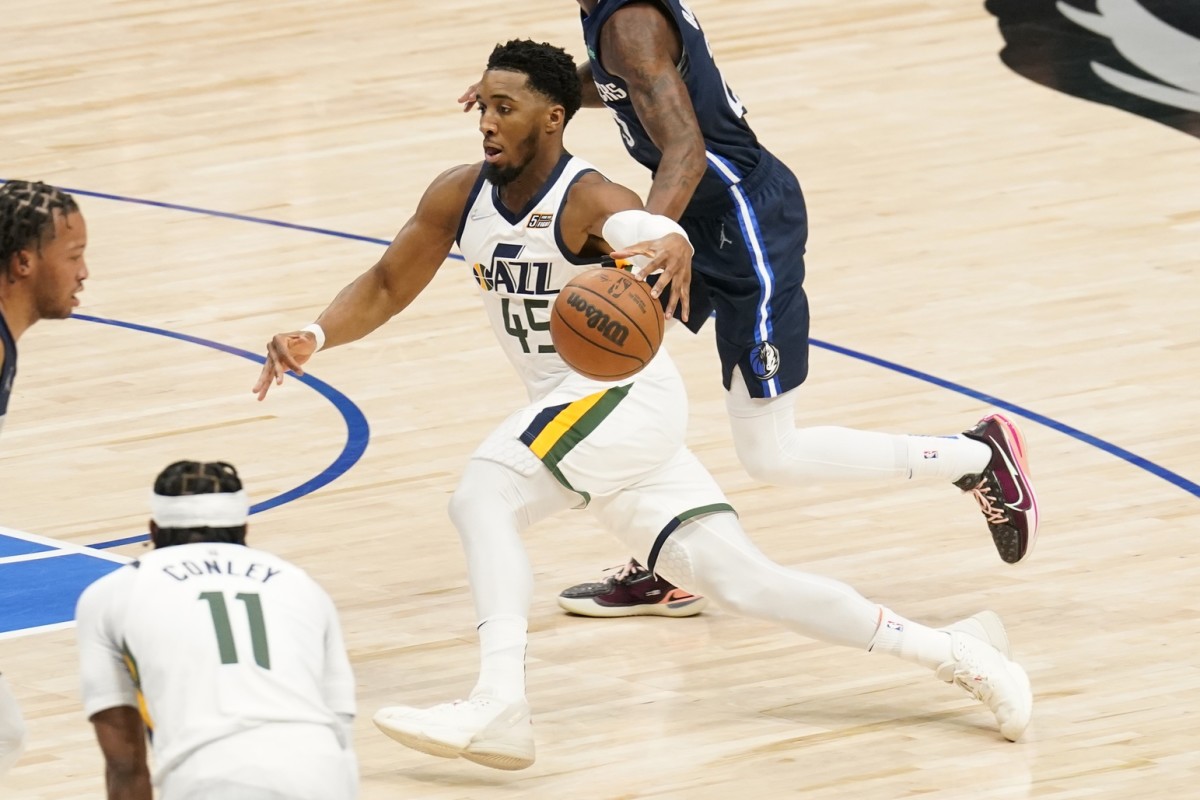
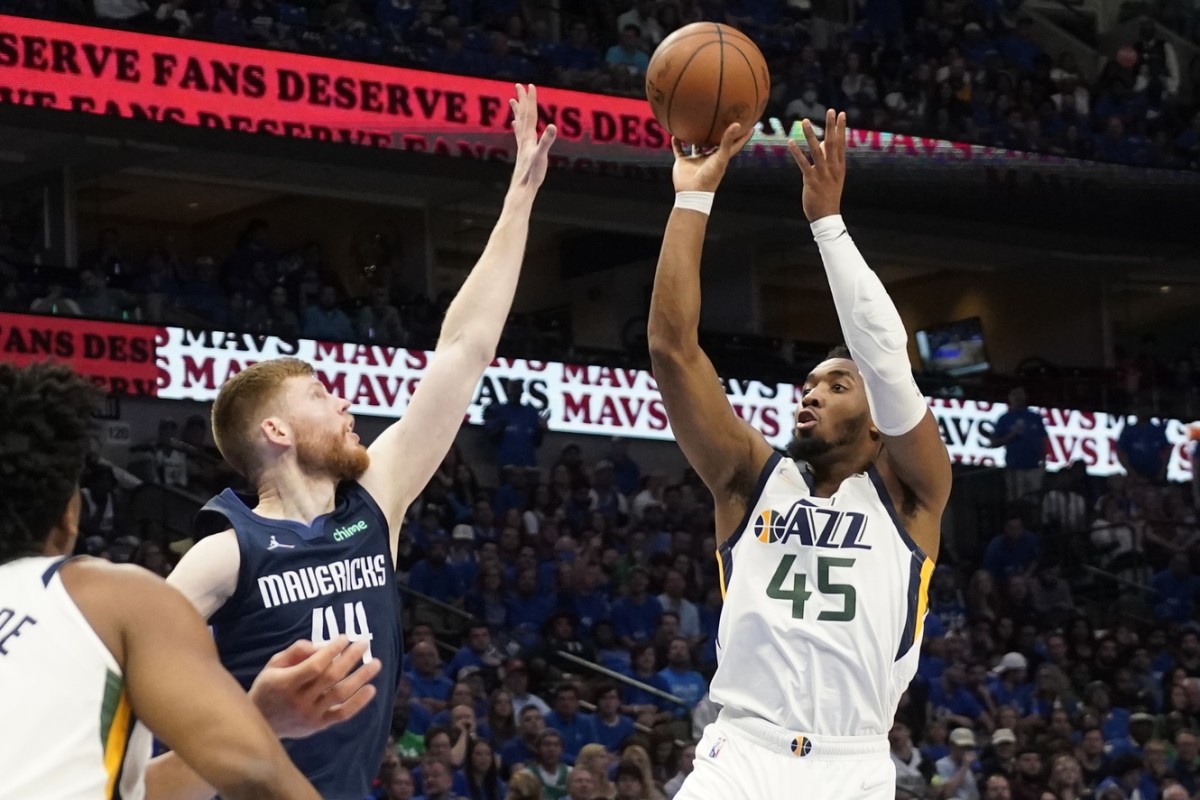
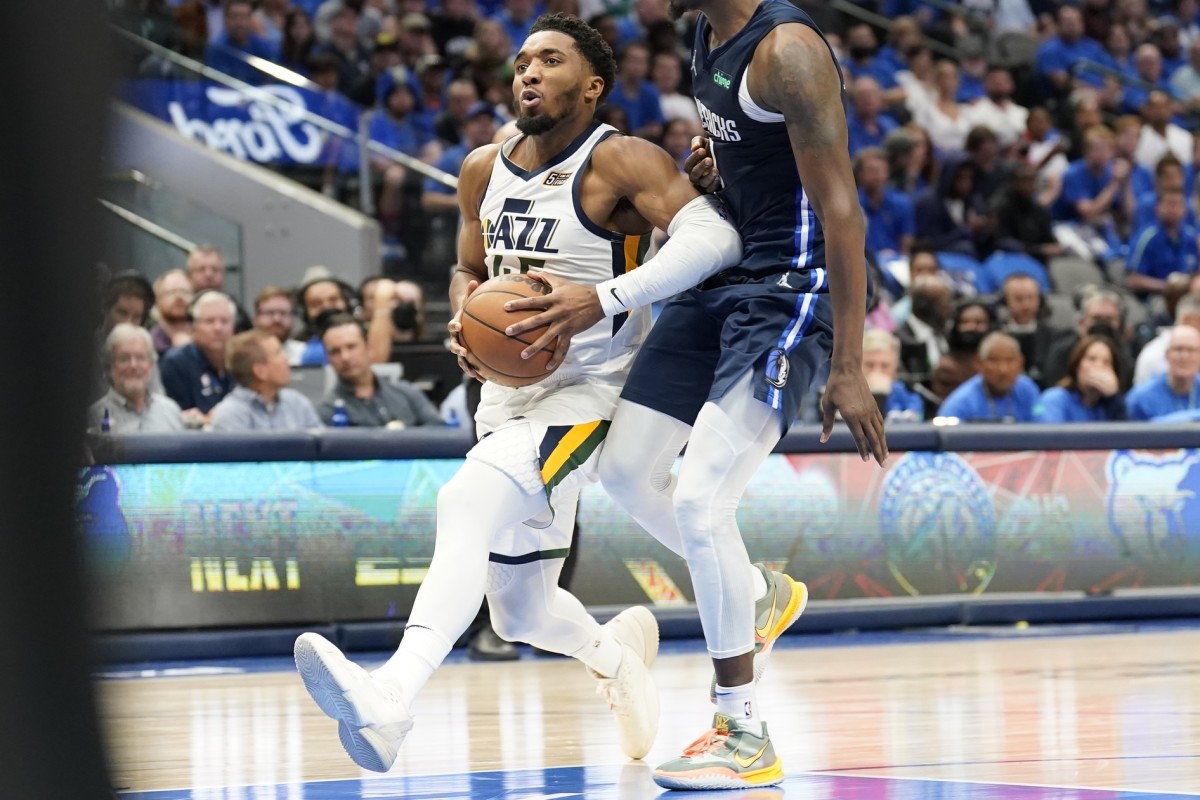
The Mavericks' main issue when attempting to slow down Mitchell was an inability to keep him out of the paint. He went 6-9 (66.7 percent) on shot attempts deep in the paint in the second half.
Mitchell did a lot of damage to the Mavericks' defense by being aggressive in transition. He's tough to contain in space, especially when there isn't help in a position to clean up lapses from an on-ball defender. In transition, these were common.
The Jazz created simpler opportunities for Mitchell to get going in the second half of this game. One of the ways of doing so was to involve Powell in screening actions to create a gap getting downhill or a switch to take advantage of out on the perimeter.
Something to keep an eye on from the Jazz was the use of multiple ball screeners for Mitchell. In previous matchups, Powell has played up to be in a position to contest a pull-up 3 from Mitchell — creating an ideal circumstance for Gobert to slip and then use a "Gortat" to seal off the big defender.
Another option for the Jazz is to be patient with their ball screening offense and to draw a veer switch from Powell. On a possession where that occurred, Mitchell passed out to get it back in a get action — setting up an isolation play against the mismatch. He took advantage with a step-back 3.
The Jazz could turn to more screening from whoever is being guarded by the weakest on-ball defender the Mavericks have on the floor at a given time. When Bertans is on the court, he's priority No. 1 for Utah to attack. If the Mavericks are going small, it's a green light for Mitchell to get to the rim.
In general, the Mavericks need sharper execution from their on-ball defenders, especially when guarding Mitchell. After an offensive rebound, Dinwiddie bit on a fake — giving up a step-through finish in a critical moment.
The Mavericks fared well in their last few regular-season matchups against Mitchell, but the Jazz have options to crack Dallas' defense. There were glimpses of this in the second half, and as the natural chess match of a playoff series plays out, more of it can be expected.
Little Things Added Up
There was a significant disparity in second-chance scoring in favor of the Jazz in Game 1. Utah scored 20 second-chance points — creating a 13-point advantage in the category. It doesn't help to shoot 26-34 (76.5 percent) on free throws in a close game, either.
Dallas has to be very precise with their rebounding efforts with how the Mavericks have to play up in ball screens and handoffs to avoid giving space for Mitchell to get his pull-up jumper off. There are plenty of chances for the Jazz to get a big in quality rebounding position.
Being unable to contain dribble penetration when there's a big with a size advantage in the dunker's spot is a prime example of a situation the Mavericks can expect to allow a putback. In the play below, Mitchell rejects a ball screen and draws help, but nobody is left to account for Whiteside.
It becomes all the more challenging when the Mavericks are using multiple players to neutralize Gobert on the offensive glass, but are unable to account for a wing player opting to crash from the perimeter.
When the Mavericks go small, they will find themselves vulnerable to getting outmuscled around the basket. Their frontcourt players need to take pride in doing everything they can to neutralize the Jazz big men on the boards, or else they risk allowing a putback or fouling.
The reality the Mavericks face is they will simply be at a disadvantage on the boards against the Jazz without Doncic playing. Dallas is missing their best rebounder and is also going to have to constantly battle through picking what they want to favor taking away.
Perhaps the best example of little things adding up was the build-up that led to Royce O'Neale's clutch 3 to ultimately seal the win for the Jazz. After preventing a clean finish attempt from O'Neale on his drive, the Mavericks had nobody in a position to challenge him for the rebound.
The offensive rebound from O'Neale created the opportunity for Mitchell to run a high ball screen with Gobert. With Kleber having to play close to the level to prevent a pull-up from Mitchell, Dinwiddie had to tag Gobert — leaving O'Neale in the corner. The hard run out from Dinwiddie ended in a failure to recover to impact O'Neale's 3 on the reload.
The defense faces a lot of tough decisions when facing the Jazz. When their offense is clicking at a higher level, it will become all the more challenging. How the Mavericks choose to approach Game 2 will be fascinating to watch.
Outlook for Game 2
With the Mavericks expecting to be without Doncic for Game 2, it'll be a challenge to overcome. Dallas will need a far more efficient performance from Brunson and Dinwiddie as they attempt to lead the offense once again.
From a defensive standpoint, it's difficult to envision the Mavericks being able to keep Mitchell in check for a whole series. He's a premier playoff performer and is going to transcend game planning at some point. It's just a matter of time it happens, but will be in Game 2?
